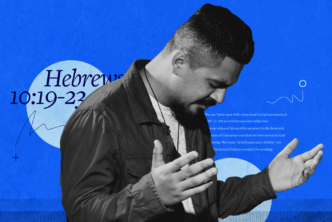D. A. Carson is one of the most respected New Testament scholars in the world. But how does he study the Bible for his personal devotions? In this excerpt from Bible Study Magazine, Carson opens up on his prayer life, private study of God’s Word, and the importance of approaching Scripture with awe and reverence.
***
When spending time in the Word of God and doing personal devotions, Carson seeks a blend of devotional reflection and serious study:
It’s important to read the Bible regularly, faithfully, and devotionally. I’m a bit suspicious of an approach that advises people to think critically and academically only when they’re preparing a message or doing exegesis, but when reading devotionally to do so without taking notes or consulting a commentary—just to sit there feeling mystical. That’s a mistake.
Personal Bible reading ought to have oomph to it. If you don’t understand something, there’s nothing wrong with taking a commentary off your shelf so that you can understand the passage better. Likewise, if you’re preparing a message, there’s something wrong with a study so detailed and structured that it doesn’t include an element of reverence and fear. According to the prophet Isaiah, in Isaiah 66:2, God looks to those who are contrite and humble of spirit, and who tremble at his Word. Whether you’re writing a commentary or having your morning devotions, you ought to have the sort of reverence that is always God’s due.
In his own devotional life, Carson says he’s never restricted himself to one way of doing things.
John Stott famously followed the Robert Murray M’Cheyne Bible-reading scheme for the whole of his Christian walk. For quite a few years I strenuously followed it, and two of my books—volumes one and two of For the Love of God—came out of that time. Sometimes I use a portion of my devotional time to memorize a chunk of Scripture—a chapter or several chapters or a small book. A while ago I read and reread Proverbs, and collected them into various topical arrays so I could see what kind of emphases were there.
In one of Carson’s publications, Praying with Paul, he talks about his habit of making lists for prayer. Praying with Paul aims to deepen readers’ relationship with the Word of God in their prayer lives.
I wanted to address a fairly simple question: How do we learn to pray? We learn by the models around us. In my conservative family home, using the King James Bible, I learned to pray in Elizabethan English, or in slightly archaic French. Someone who is converted at a campus group meeting at age 23 with no Christian background will probably learn to pray less formally. But where are the best models from which we can learn? They are the prayers that God himself has left for us in Scripture.
Praying with Paul fastens on eight or ten of Paul’s prayers to see not only what he is praying, but also why.
Are there patterns in the things that he’s praying for? There’s nothing wrong with praying about anything, but if we want to reform our prayers to be more in line with those of the apostles, we need to study the apostles’ prayers. I hope that, in working through the book, readers will learn to pray the prayers of the apostles in their own context.
***
Explore D. A. Carson’s Praying with Paul today.






